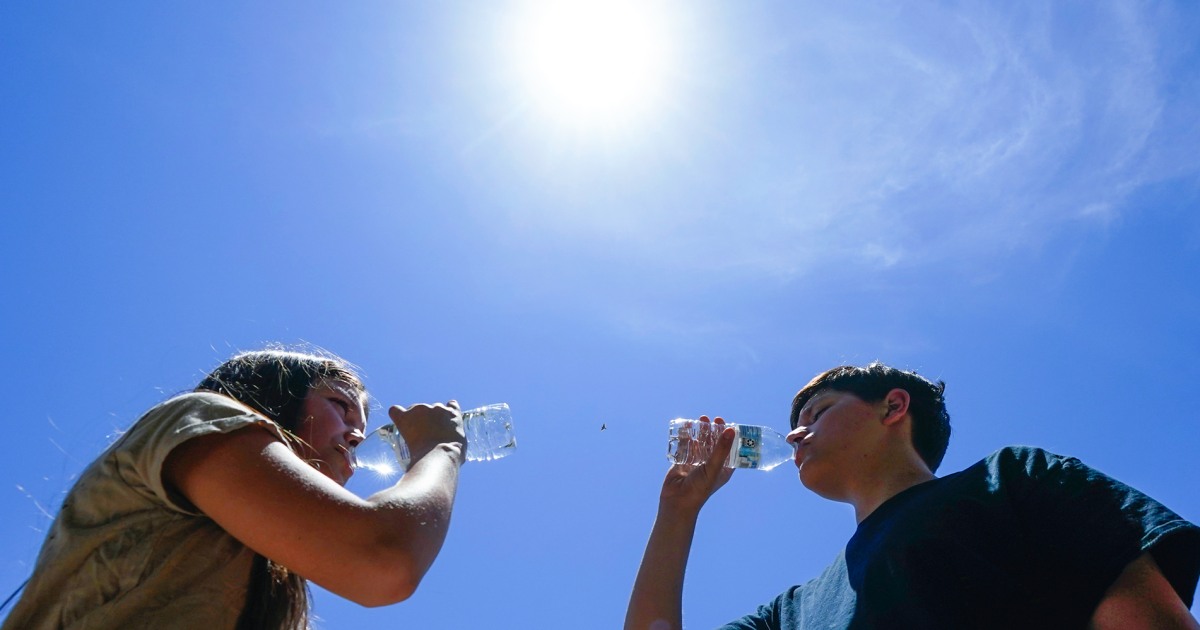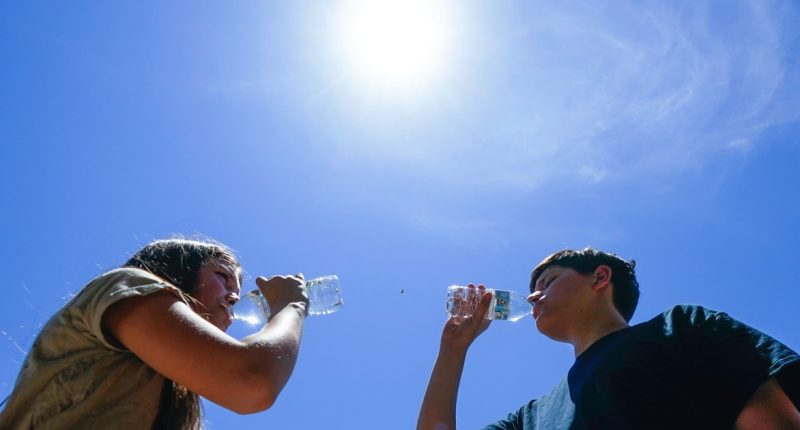
Together, the tools and guidelines can, for instance, help people identify a location to stay cool if they don’t have working air conditioning, recognize symptoms of heat-related illness or understand how their medications may interact with heat, CDC director Mandy Cohen said Monday in a news briefing.
“Heat can impact our health, but heat-related illness and death are preventable,” Cohen said.
Heat kills more people in the U.S. each year than any other extreme weather event, including floods, hurricanes and tornadoes. Last year was the planet’s warmest on record, and the summer was brutally hot for huge swaths of the U.S., particularly across the South and Southwest.
NOAA officials said they hope the new resources will help communities plan for the upcoming summer months. The agency has said it expects temperatures for much of the U.S. in May and June to be above average, ahead of what is expected to be another hot summer across the country.
“When it comes to heat, it’s never too early to prepare,” NOAA administrator Rick Spinrad said in the briefing.
On NOAA’s HeatRisk tool, the scale ranges from 0 or green, meaning little or no risk from expected heat, to 4 or magenta, which indicates extreme and/or long-duration heat-related impacts.
The risk levels account for the projected high and low temperatures, and factor in the cumulative impacts of heat over daytime and nighttime conditions, according to NOAA. The outlooks are designed to be personalized by location, since a 100-degree Fahrenheit day in Miami will feel different from a 100-degree day in Phoenix, for example.
The forecasts also include historical context to help people understand how unusual the projected temperatures will be for any given time of year.
Ken Graham, director of NOAA’s National Weather Service, said the tools could help users plan when to limit time outdoors or put off certain strenuous activities. The idea is to give people more context to supplement the heat watches and warnings that the agency issues, he added.
NOAA said the National Weather Service initially developed a prototype of the HeatRisk tool for California in 2013. In 2017, the project was expanded to include all Western states, and it is now available experimentally across the contiguous U.S.
Members of the public can submit feedback on the tool to the National Weather Service through Sept. 30.
Source: | This article originally belongs to Nbcnews.com









